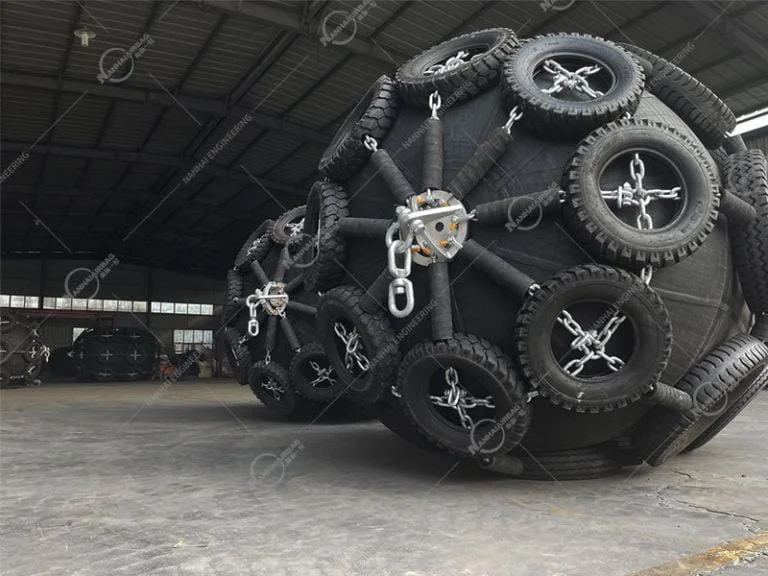What are the main parts of the inspection of marine fenders?
06/06/2025Floating Foam Fenders And Pneumatic Fenders
06/06/2025Vulcanization Process Of Pneumatic Rubber Fenders
Marine fenders play a vital role in modern port infrastructure by protecting vessels and docks from impact damage. Among them, large pneumatic rubber fenders stand out for their flexibility, energy absorption, and adaptability in high-load scenarios.
Advanced Vulcanization Techniques for Pneumatic Rubber Fenders
Large pneumatic rubber fenders are typically vulcanized using a flat-plate vulcanizing press with canvas belts. Due to their thick rubber construction, they require uniform heat distribution and high vulcanization stability throughout the entire material.
To ensure product quality, manufacturers apply a higher vulcanization pressure, generally between 20–40 MPa, which is significantly more than the pressure used for standard rubber goods. Additionally, because of the product’s thickness, low-temperature, long-duration vulcanization is preferred, typically at 140–160°C. The exact curing time is determined through vulcanization curve analysis.

Key Material Properties: Hardness and Stress Resistance
The reaction force and contact pressure of a rubber fender are closely linked to the type and hardness of the rubber compound used. A higher hardness results in greater energy return and stronger resistance. In this context, hardness and modulus at specific elongation (tensile stress at fixed strain) are the two most critical indicators that determine the performance and usability of a marine fender.
A well-selected rubber formulation ensures the product maintains optimal elasticity while withstanding prolonged pressure and environmental exposure.
Advantages of Rubber Fenders in Port Applications
Rubber fenders, especially pneumatic types, offer several performance advantages that make them popular worldwide:
- Excellent elasticity and high energy absorption
- Long service life with minimal maintenance
- Suitable for mass production with consistent quality
- Reduces the horizontal force on docks
- Enhances the docking capacity of port facilities
- Protects ship hulls and extends their lifespan
Their ability to minimize collision impact not only improves safety but also lowers infrastructure and vessel maintenance costs.
Sizing Challenges and Nanhai’s Capability in Large Fender Production
Marine fenders come in a wide range of sizes. For standard sizes, finding compatible vulcanization equipment is straightforward. However, for oversized fenders, the need for custom vulcanization equipment can be a major challenge. Investing in such equipment for small batch production is often not cost-effective.
NANHAI addresses this problem by offering a full range of custom pneumatic fenders with diameters from 300 mm to 4700 mm and lengths from 500 mm to 13,000 mm. Our manufacturing capabilities allow us to deliver oversized products efficiently, without sacrificing quality or driving up production costs.
Conclusion
As marine traffic increases and ports evolve, the demand for high-performance fender systems will only grow. Large pneumatic rubber fenders, when manufactured with precision and advanced materials, offer unmatched protection and value. With the ability to handle custom sizes and deliver durable performance, companies like NANHAI are helping ports and shipping operators around the world enhance safety and reduce costs.
